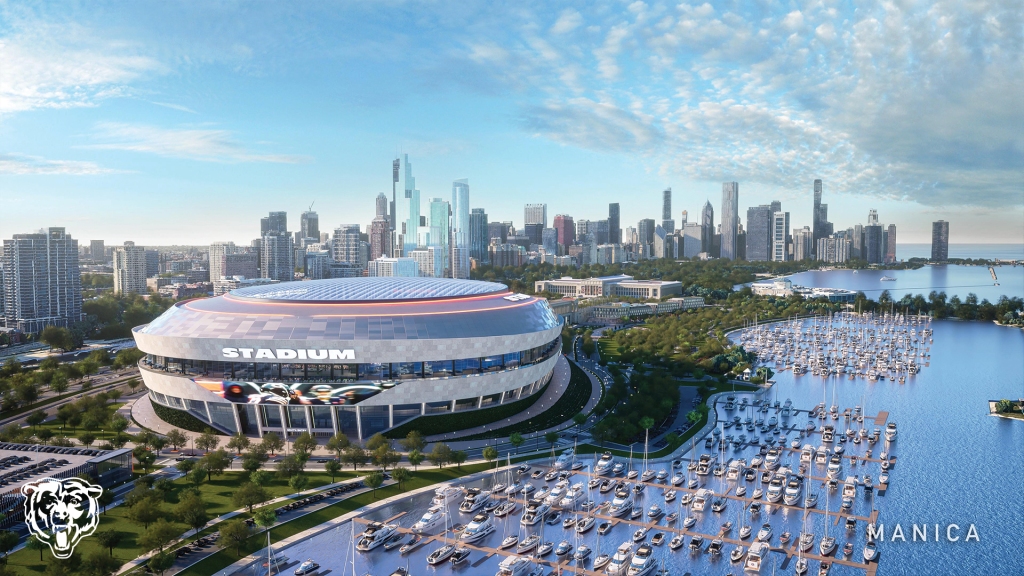
After residing at Soldier Field since 1971, the Chicago Bears are charting a course for a new multipurpose stadium, slated to be constructed just south of their current iconic home.
Kevin Warren, the president of the Bears, disclosed on Wednesday the franchise’s intentions to erect a lakeside stadium featuring a fixed roof, alongside a 20 percent expansion in green space on the museum campus surrounding the venue. This additional space is designed to enhance the visitor experience. Warren highlighted that the new stadium will facilitate an increased number of concerts and events, potentially enabling the Bears to bid for hosting a Super Bowl. The objective is to secure approval during the ongoing legislative session, aiming to break ground by summer 2025, with hopes of inaugurating the stadium by 2028.
Slideshow:
Soldier Field will undergo a transformation, with sports fields and gardens taking its place, while the historic colonnades will stand as a tribute to Chicago’s military veterans. Throughout the construction of the new stadium, the Bears will continue to play at Soldier Field.
Chicago Mayor Brandon Johnson hailed the project as a landmark moment, emphasizing its commitment to the public good. He expressed anticipation for the positive impact the stadium and expanded recreational facilities will have on the city.
The ambitious stadium project carries a price tag of $3.2 billion, with Bears ownership pledging $2 billion towards the endeavor. Karen Murphy, the Bears’ executive vice president of stadium development and COO, outlined plans to seek a $300 million NFL loan as part of the private investment strategy. Mayor Johnson assured residents that the project would not result in new taxes.
While the seating capacity of the new stadium will mirror that of Soldier Field at 65,000 seats, the blueprint includes additional standing-room-only options.

The project’s first phase focuses on constructing the stadium, followed by enhancing infrastructure in the surrounding campus in phase two. Phase three entails optional infrastructure improvements aimed at enriching the campus, enhancing circulation, and maximizing public economic benefits, totaling $665 million. Completion of the surrounding infrastructure is projected to take five years following the stadium’s inauguration.
Enhancements to access, infrastructure, and amenities, including public restrooms and food and beverage options, are also part of the project plans to enrich the museum campus experience.
The Bears had previously contemplated relocating to the suburbs north of Chicago, evidenced by their purchase of the Arlington Park racecourse property in Arlington Heights, Illinois, in September 2021. However, challenges surrounding school districts and real estate taxes prompted a shift back to Chicago. Despite being the largest landowner in Arlington Heights, the Bears remain committed to their efforts within the city limits.

George McCaskey, chairman of the Bears, echoed this sentiment, emphasizing the team’s dedication to the best interests of Bears fans and the community. He emphasized the potential of the museum campus area to flourish with improved access, benefiting not only Bears fans but also the broader Chicago community.
Drawing from his experience with the Vikings’ U.S. Bank Stadium, Warren envisions a similar success story for the Bears’ new venue, setting forth a vision that promises to elevate the Bears’ stadium experience to new heights.















